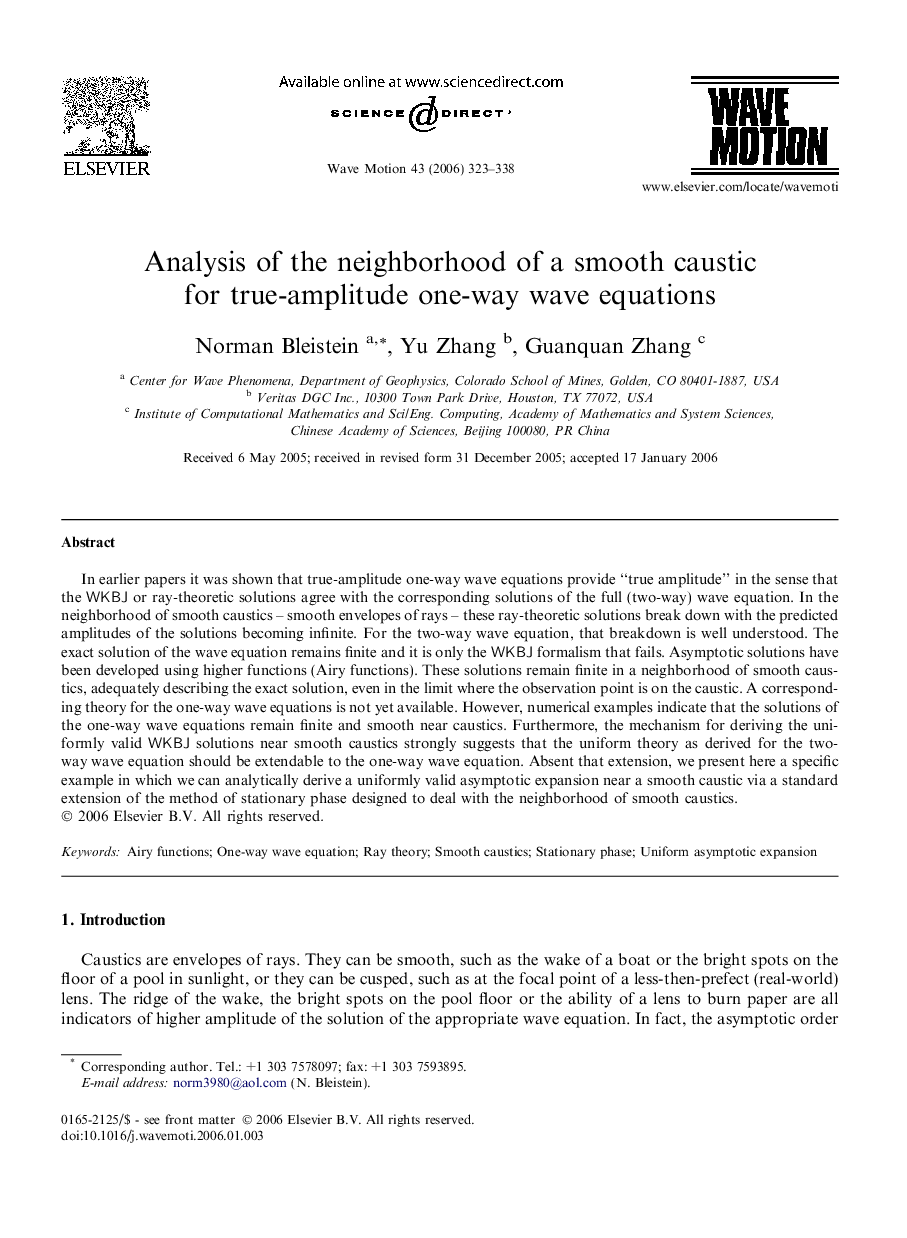| Article ID | Journal | Published Year | Pages | File Type |
|---|---|---|---|---|
| 1900814 | Wave Motion | 2006 | 16 Pages |
In earlier papers it was shown that true-amplitude one-way wave equations provide “true amplitude” in the sense that the WKBJ or ray-theoretic solutions agree with the corresponding solutions of the full (two-way) wave equation. In the neighborhood of smooth caustics – smooth envelopes of rays – these ray-theoretic solutions break down with the predicted amplitudes of the solutions becoming infinite. For the two-way wave equation, that breakdown is well understood. The exact solution of the wave equation remains finite and it is only the WKBJ formalism that fails. Asymptotic solutions have been developed using higher functions (Airy functions). These solutions remain finite in a neighborhood of smooth caustics, adequately describing the exact solution, even in the limit where the observation point is on the caustic. A corresponding theory for the one-way wave equations is not yet available. However, numerical examples indicate that the solutions of the one-way wave equations remain finite and smooth near caustics. Furthermore, the mechanism for deriving the uniformly valid WKBJ solutions near smooth caustics strongly suggests that the uniform theory as derived for the two-way wave equation should be extendable to the one-way wave equation. Absent that extension, we present here a specific example in which we can analytically derive a uniformly valid asymptotic expansion near a smooth caustic via a standard extension of the method of stationary phase designed to deal with the neighborhood of smooth caustics.
